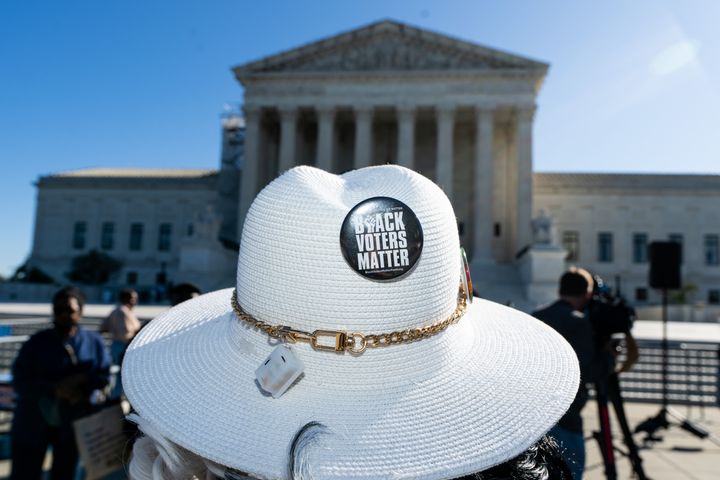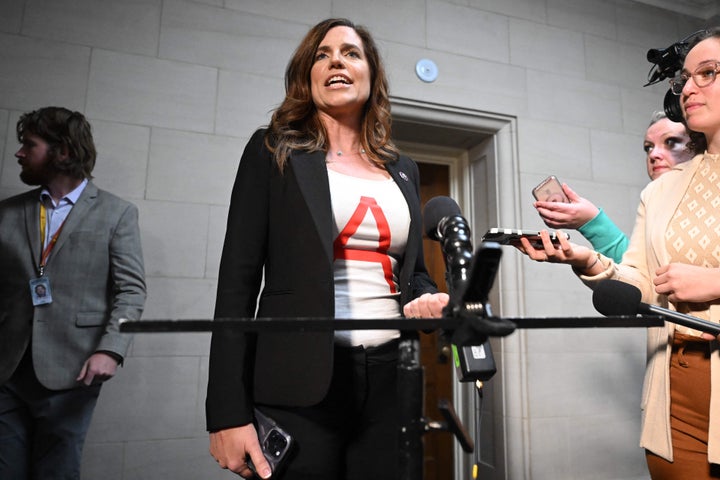The Supreme Court’s conservatives were highly skeptical on Wednesday of arguments that Republicans in the South Carolina legislature unconstitutionally relied on race while drawing congressional district lines.
At issue in Wednesday’s case, Alexander v. South Carolina State Conference of the NAACP, is whether a three-judge federal district court erred when it ruled that the state legislature had unconstitutionally manipulated racial demographics when drawing lines for the state’s 1st Congressional District, in an effort to achieve a Republican district in the Charleston region.
That district court panel ruled that the state’s movement of white voters into the district, and Black voters out of it, had the effect of “bleaching... African American voters out of the Charleston County portion of [the 1st District],” in violation of the 14th Amendment’s equal protection clause, which forbids the predominance of race in redistricting.
But the conservative justices appeared ready to side with the state, which argued that changes to the district were made solely to entrench a Republican political advantage ― the kind of partisan gerrymandering that the court gave a green light to in its 2019 decision in Rucho v. Common Cause. In Rucho, the court ruled that the Constitution has nothing to say about partisan gerrymandering and, therefore, such cases can’t be judged in federal courts.
During arguments, the conservatives repeatedly questioned the reliability of the evidence presented to the district court, and whether the Black South Carolinian plaintiffs had needed to show direct evidence that the state relied predominantly on race to draw the map lines Republicans desired.
“We have never had a case where there has been no direct evidence, no map, no strangely configured districts... and, instead, it is all resting on circumstantial evidence,” Chief Justice John Roberts said.

Throughout the arguments, the liberal justices tried to explain that Supreme Court precedents, including in the 2017 case of Cooper v. Harris, stated that this kind of direct evidence of heavy reliance on race as a factor in redistricting is not actually required.
The court ruled in Cooper that plaintiffs may show direct evidence, provide circumstantial evidence, or supply a mixture of both to prove that a state improperly relied on race when drawing district lines.
“I think Cooper was petulantly clear that you don’t need smoking-gun evidence,” Justice Sonia Sotomayor said.
Instead, the district court panel based its ruling in the South Carolina case on expert analyses showing that without taking race into account, the legislature could not have configured the exact balance of Black voters in the district they needed to achieve a Republican-weighted district. The ruling also factored in testimony from lawmakers and map drawers.
The district court found that the evidence showed that South Carolina’s limit of a maximum 17% Black voting population for the district could not have been accomplished without using race as the major factor.
The Supreme Court’s conservatives sought to undermine this expert evidence on a number of grounds, particularly for not taking political partisanship into account.
“How can we possibly give any weight to an expert account that did not take politics into account?” Justice Samuel Alito said during an extended cross-examination of Leah Aden, an NAACP Legal Defense Fund lawyer arguing on behalf of the Black South Carolinian plaintiffs.
Aden explained that one of the four expert analyses did in fact use some partisan political data, but noted that the analyses were also conducted in response to the state’s defense, which argued that it drew the map to follow traditional redistricting criteria, like compactness, contiguity and maintaining communities of interest.
Aden added that the state only shifted its rationale to claim it was pursuing a preferred partisan outcome after the case had gone to court and the analyses had been submitted.
The state’s reliance on the argument that it was simply engaged in blatant partisan gerrymandering loomed over the arguments. What once may have been a damning argument ― politicians drawing district boundaries for naked partisan gain ― is now a legitimate defense.
With racial polarization incredibly high in Southern states like South Carolina, the court’s conservatives argued it was impossible to separate racial motives from partisan ones. This seemed to be a point in favor of dismissing the prohibition on race as a factor, so as to continue allowing partisan motives.
“At least as a practical matter ... there is no way to disentangle race and politics,” Alito said.

The liberal justices and the lawyers arguing on the side of the plaintiffs, Aden and Assistant to the U.S. Solicitor General Carolina Flynn, sought to raise the fact that the state relied on scant partisan political data, looking only at the 2020 election, while also regularly checking more detailed racial data when drawing the district lines.
South Carolina’s use of only a single presidential election stood out as odd, as the data from that one election cannot properly provide information on how voters behave in non-presidential elections.
Without such historical election data to evaluate voting trends, race serves as the best stand-in for partisanship, especially in a state where 90% of Black voters cast their ballots for Democrats.
“Everybody can tell you that if you really want to draw a stable partisan gerrymander, you do not rely on a single presidential year election data,” Justice Elena Kagan said. “They had not only the opportunity sitting there on their computers but the clear incentive to be looking at this race data, which is more predictive of future voting behavior than a single presidential year election.”
The entire argument showed what the world of redistricting looks like in the wake of the court’s 2019 decision in Rucho, which found that claims of partisan gerrymandering are non-justiciable in federal courts.
In the South, if the court’s conservatives overrule the district court, that will mean more freedom for Republican legislatures to use partisanship as a proxy for race discrimination in future rounds of redistricting.

